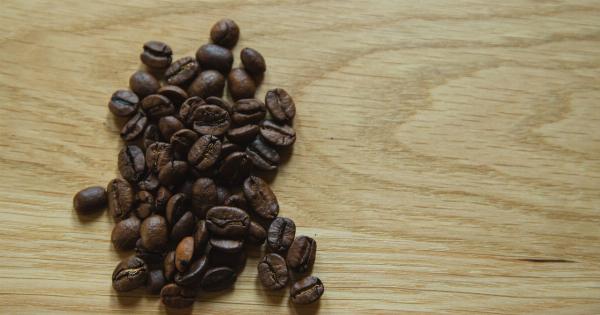Everyone loves to indulge in delicious foods, but sometimes our bodies don’t respond well to certain ingredients. Bloating and gas are common symptoms that many people experience after consuming certain foods.
If you frequently find yourself feeling uncomfortable and bloated after a meal, it may be worth examining your diet and identifying potential culprits. In this article, we will explore five common foods that can cause bloating and gas.
1. Beans and Legumes
Beans and legumes such as chickpeas, lentils, and kidney beans are packed with essential nutrients and are a great addition to any plant-based diet. However, they are notorious for causing bloating and gas in some individuals.
The reason behind this is their high content of complex carbohydrates called oligosaccharides, which our bodies struggle to break down completely.
To reduce the likelihood of experiencing bloating and gas after consuming beans and legumes, consider soaking them overnight or using canned varieties, which have been pre-soaked.
Additionally, gradual inclusion of these foods in your diet can help your body adjust and reduce the symptoms over time.
2. Cruciferous Vegetables
Cruciferous vegetables like broccoli, cauliflower, cabbage, and Brussels sprouts are highly nutritious and offer numerous health benefits. However, they contain a carbohydrate called raffinose, which is known to cause gas and bloating.
Moreover, these vegetables also contain sulfur compounds that can contribute to unpleasant smelling gas.
If you experience bloating and gas after consuming cruciferous vegetables, try cooking them instead of consuming them raw. Cooking helps break down the complex carbohydrates, making them easier to digest.
You can also try incorporating digestive aids like ginger or fennel seeds to minimize discomfort.
3. Carbonated Drinks
Carbonated drinks like soda and sparkling water often contain gas bubbles that can get trapped in your stomach, leading to bloating and gas.
Additionally, these beverages usually contain artificial sweeteners or high fructose corn syrup, which can also contribute to digestive issues for some people.
To avoid bloating, opt for non-carbonated beverages such as water, herbal tea, or freshly squeezed juices.
If you can’t resist carbonated drinks, consider drinking them slowly or pouring them into a glass to allow some of the gas to escape before consuming.
4. Dairy Products
Dairy products like milk, cheese, and yogurt can be problematic for people who are lactose intolerant.
Lactose is the natural sugar found in milk and dairy, and individuals lacking the enzyme lactase may struggle to digest it, leading to bloating, gas, and even diarrhea.
If you suspect that lactose is the culprit behind your digestive issues, try switching to lactose-free or plant-based alternatives like almond milk or soy yogurt.
These options provide a similar taste and texture while being easier on your digestive system.
5. Artificial Sweeteners
Artificial sweeteners, commonly found in sugar-free products, can cause digestive problems for some people.
These sweeteners, such as sorbitol, mannitol, and xylitol, are not fully absorbed by the body and can ferment in the gut, leading to bloating and gas.
If you experience digestive issues after consuming artificial sweeteners, try avoiding products labeled as “sugar-free” or opt for natural sweeteners like stevia or honey instead.
Be aware that some natural sweeteners in excessive amounts may also cause bloating, so moderation is key.
Conclusion
Bloating and gas can be uncomfortable and sometimes even embarrassing, but they are common symptoms that can be managed by making dietary adjustments.
Identifying the trigger foods that cause bloating and gas can help you take the necessary steps to minimize these symptoms and improve your overall digestive health.
Remember, everyone’s body is unique, and what may cause bloating and gas in one person may not affect another.
It’s essential to listen to your body, keep a food diary, and consult with a healthcare professional if you have persistent or severe digestive issues.




























